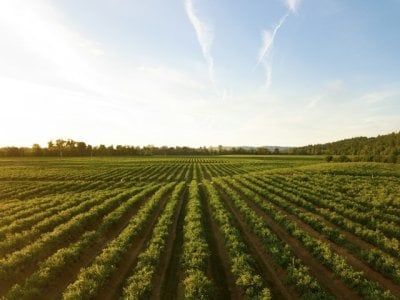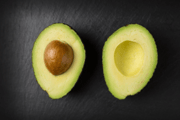Is your favourite winery going under? Extreme weather, low demand impacting wine industry
By
Seia Ibanez
- Replies 12
The wineries of this world have seen better days.
With extreme weather and falling demand, they are in jeopardy, and it seems more and more wineries are facing closure, according to reports.
Jordi Ustrell, interim chief executive of Celler Devinssi, a winery in the small Spanish town of Gratallops, told a news source recently that the vineyard's dry plants will only produce about half of their usual 15,000 bottles this year.
The International Organisation for Vine and Wine (OIV) said global wine production will be at its lowest since 1961 due to soaring temperatures and extraordinary weather.
Output in Italy and Spain—the world's biggest and third-biggest producers in 2022—is also expected to drop by 12 and 14 per cent.
According to OIV Head of Statistics Giogio Delgrosso, climate change is having a tremendous impact. He says extreme weather strikes more frequently, which has brought about dwindling harvests.
‘Now extreme climate events are always happening. Every year there's something,’ he said.
Central and southern Italy experienced heavy rainfall throughout the year, causing mould to spread in vineyards. While in Spain, severe drought and soaring temperatures affected its vineyards.
Similar conditions have also led to the decline of expected wine outputs in other wine-producing areas, including Australia and South Africa.
Back in Spain, Ustrell has had no choice but to cope with the changing weather.
There has been little to no rain in Gratallops—120 kilometres from Barcelona—for the past two years, putting severe stress on Ustrell’s vines as the vineyards are so parched.
Snow, which provides moisture for the vines during dry summer months by seeping into the deepest layers of soil, hasn’t fallen once during this period as well.
However, Ustrell’s other vineyard in the Bordeaux region, where Cabernet Sauvignon is harvested, was among the first to ‘collapse’ this year, as he would put it, due to its humid conditions.
Due to these conditions, Celler Devinssi and 25 other wineries are lobbying to improve the country’s water irrigation supply.
While Celler Devinssi may not be at risk to close, its bank account will almost certainly ‘be in the red’, said Ustrell.
But while extreme weather is wreaking havoc on vineyards across the globe, for others, it has presented an opportunity.
In Oregon, United States (US), the world’s fourth largest producer, rising temperatures have made it into 'one of the top producing regions in the country'. Output in the US is forecast to grow 12 per cent this year.
Greg Jones, a local climatologist and chief executive of Abacela, an Oregon-based winery, mentioned that Oregon couldn’t grow grapes half a century ago.
In France, winemakers face the opposite problem of having too much wine.
France is on track to become the world's biggest producer this year, according to OIV data, partly attributed to favourable weather.
Unfortunately, the oversupply has made it difficult for winemakers to sell their own produce.
This resulted in pushing down prices. But a buyback scheme was organised by the French and European Union authorities–costing €200 million ($335 million AUD) so French winemakers can sell their excess stock to distilleries to recycle them into other products, such as hand sanitiser.
At the same time, falling prices have coincided with rising input costs, such as fertilisers, bottles, and transportation fuel.
To add to a bleak picture of the wine industry overall, fewer people are also drinking wine—falling 6 per cent between 2017 and 2022, according to OIV.
Inflation has eroded consumers’ disposable income, leading to changes in drinking habits. People globally have been drinking less wine than in previous years, choosing beers or spirits, or ditching alcohol altogether.
According to the European Commission in June, estimates for this year have declined across European countries, which also resulted in some vineyards closing their doors.
Michael Baynes, co-founder of Vineyards-Bordeaux Christie's International Real Estate, an investment advisory specialising in vineyards, said the number of winemakers selling up has 'dramatically increased' this year.
‘It’s a bloodbath,’ he said.
‘We're seeing some very sad stories at the moment. A lot of multigeneration families are losing estates that they've nurtured for many years.’
Baynes said these families’ problems started 20 years ago when ‘New World’ wines like those from Chile, Australia, and Argentina became popular.
Baynes added that family-run wineries that are sold into the lower end of the market are in a precarious position. The generations-old wineries may shut down for good due to bad harvest, a new export tariff, and another interest rate hike.
He added that ‘Jittery and nervous’ lenders won’t be coming to the rescue as well for the wineries.
‘They are turning off the tap of lending,’ Baynes said.
‘The families, the generations, the blood, sweat and toil that has gone into creating a lovely product may be lost forever.’
While others remain teetering on the brink, others have decided to let their businesses go.
John Mitra and his wife Penelope were one of the many forced to sell their Bordeaux vineyards.
‘It's just too risky,’ Mitra said.
‘Some years you would get 3000 bottles off a hectare. Other years, you'd end up with 50. Unless you have substantial financial backing behind you, you can't operate.’
Droughts made predicting the harvest too difficult, so the couple moved 340 miles east from Bordeaux to establish The Burgundy Wine Company, a merchant specialising in wines produced by small, independent vineyards.
The couple chose the Burgundy region because it was small, and the wine there—less available, more coveted—would be priced higher than wine from other places.
Mitra’s friends and suppliers in the industry also considered selling their vineyards or taking advantage of the French government’s subsidy to uproot vines and replant the land with newer crops or turn it into a woodland.
Mitra also said that some of them replaced their vines with olive trees and kiwi plants, which are more drought-resistant.
However, he misses his previous work. Through ‘rain or freezing cold’ weather, he and Penelope would tend to their vines for 12 months. They would spend two or three days harvesting the grapes yearly, which made it worthwhile, he said.
But Mitra is still happy to go to a new path in an industry he loves despite the redirection, and he still feels lucky to be living in France’s renowned vineyards.
‘Now I just walk my dog in the vines, rather than own them,’ he said.

Members, do you still prefer drinking wine? Have you tried drinking wines made in other countries? Let us know in the comments below!
With extreme weather and falling demand, they are in jeopardy, and it seems more and more wineries are facing closure, according to reports.
Jordi Ustrell, interim chief executive of Celler Devinssi, a winery in the small Spanish town of Gratallops, told a news source recently that the vineyard's dry plants will only produce about half of their usual 15,000 bottles this year.
The International Organisation for Vine and Wine (OIV) said global wine production will be at its lowest since 1961 due to soaring temperatures and extraordinary weather.
Output in Italy and Spain—the world's biggest and third-biggest producers in 2022—is also expected to drop by 12 and 14 per cent.
According to OIV Head of Statistics Giogio Delgrosso, climate change is having a tremendous impact. He says extreme weather strikes more frequently, which has brought about dwindling harvests.
‘Now extreme climate events are always happening. Every year there's something,’ he said.
Central and southern Italy experienced heavy rainfall throughout the year, causing mould to spread in vineyards. While in Spain, severe drought and soaring temperatures affected its vineyards.
Similar conditions have also led to the decline of expected wine outputs in other wine-producing areas, including Australia and South Africa.
Back in Spain, Ustrell has had no choice but to cope with the changing weather.
There has been little to no rain in Gratallops—120 kilometres from Barcelona—for the past two years, putting severe stress on Ustrell’s vines as the vineyards are so parched.
Snow, which provides moisture for the vines during dry summer months by seeping into the deepest layers of soil, hasn’t fallen once during this period as well.
However, Ustrell’s other vineyard in the Bordeaux region, where Cabernet Sauvignon is harvested, was among the first to ‘collapse’ this year, as he would put it, due to its humid conditions.
Due to these conditions, Celler Devinssi and 25 other wineries are lobbying to improve the country’s water irrigation supply.
While Celler Devinssi may not be at risk to close, its bank account will almost certainly ‘be in the red’, said Ustrell.
But while extreme weather is wreaking havoc on vineyards across the globe, for others, it has presented an opportunity.
In Oregon, United States (US), the world’s fourth largest producer, rising temperatures have made it into 'one of the top producing regions in the country'. Output in the US is forecast to grow 12 per cent this year.
Greg Jones, a local climatologist and chief executive of Abacela, an Oregon-based winery, mentioned that Oregon couldn’t grow grapes half a century ago.
In France, winemakers face the opposite problem of having too much wine.
France is on track to become the world's biggest producer this year, according to OIV data, partly attributed to favourable weather.
Unfortunately, the oversupply has made it difficult for winemakers to sell their own produce.
This resulted in pushing down prices. But a buyback scheme was organised by the French and European Union authorities–costing €200 million ($335 million AUD) so French winemakers can sell their excess stock to distilleries to recycle them into other products, such as hand sanitiser.
At the same time, falling prices have coincided with rising input costs, such as fertilisers, bottles, and transportation fuel.
To add to a bleak picture of the wine industry overall, fewer people are also drinking wine—falling 6 per cent between 2017 and 2022, according to OIV.
Inflation has eroded consumers’ disposable income, leading to changes in drinking habits. People globally have been drinking less wine than in previous years, choosing beers or spirits, or ditching alcohol altogether.
According to the European Commission in June, estimates for this year have declined across European countries, which also resulted in some vineyards closing their doors.
Michael Baynes, co-founder of Vineyards-Bordeaux Christie's International Real Estate, an investment advisory specialising in vineyards, said the number of winemakers selling up has 'dramatically increased' this year.
‘It’s a bloodbath,’ he said.
‘We're seeing some very sad stories at the moment. A lot of multigeneration families are losing estates that they've nurtured for many years.’
Baynes said these families’ problems started 20 years ago when ‘New World’ wines like those from Chile, Australia, and Argentina became popular.
Baynes added that family-run wineries that are sold into the lower end of the market are in a precarious position. The generations-old wineries may shut down for good due to bad harvest, a new export tariff, and another interest rate hike.
He added that ‘Jittery and nervous’ lenders won’t be coming to the rescue as well for the wineries.
‘They are turning off the tap of lending,’ Baynes said.
‘The families, the generations, the blood, sweat and toil that has gone into creating a lovely product may be lost forever.’
While others remain teetering on the brink, others have decided to let their businesses go.
John Mitra and his wife Penelope were one of the many forced to sell their Bordeaux vineyards.
‘It's just too risky,’ Mitra said.
‘Some years you would get 3000 bottles off a hectare. Other years, you'd end up with 50. Unless you have substantial financial backing behind you, you can't operate.’
Droughts made predicting the harvest too difficult, so the couple moved 340 miles east from Bordeaux to establish The Burgundy Wine Company, a merchant specialising in wines produced by small, independent vineyards.
The couple chose the Burgundy region because it was small, and the wine there—less available, more coveted—would be priced higher than wine from other places.
Mitra’s friends and suppliers in the industry also considered selling their vineyards or taking advantage of the French government’s subsidy to uproot vines and replant the land with newer crops or turn it into a woodland.
Mitra also said that some of them replaced their vines with olive trees and kiwi plants, which are more drought-resistant.
However, he misses his previous work. Through ‘rain or freezing cold’ weather, he and Penelope would tend to their vines for 12 months. They would spend two or three days harvesting the grapes yearly, which made it worthwhile, he said.
But Mitra is still happy to go to a new path in an industry he loves despite the redirection, and he still feels lucky to be living in France’s renowned vineyards.
‘Now I just walk my dog in the vines, rather than own them,’ he said.
Key Takeaways
- Global wine production is expected to drop to its lowest level since 1961 due to extreme weather conditions such as heatwaves, flooding, and fungal diseases.
- Major producers like Italy, Spain, Australia, South Africa and Chile are predicted to suffer output drops between 10 and 24 per cent.
- Vineyards in Spain are particularly affected by severe drought and heat, while those in Italy have been hit by heavy rainfall and mould.
- Despite the expected reduction in global wine production, output in the United States is predicted to grow 12 per cent this year, with rising temperatures benefiting wine production in regions such as Oregon.
- Global wine consumption has fallen by around 6 per cent between 2017 and 2022. Preferences seem to shift towards beer and spirits or forgoing alcohol altogether.
- This trend, coupled with the production challenges vineyards face, puts financial pressure on the winemaking industry.
Members, do you still prefer drinking wine? Have you tried drinking wines made in other countries? Let us know in the comments below!








